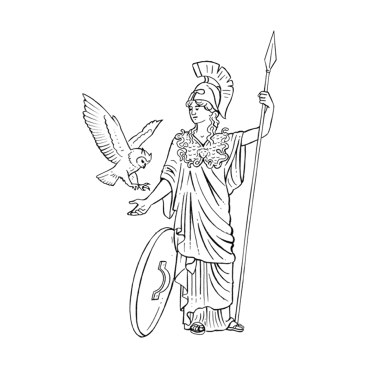
Last month, the Reviewing Committee for the Export of Works of Art and Objects of Cultural Interest published its 70th report, listing the applications it considered in 2024–25. The committee was created in 1952, following a report by John Anderson, 1st Viscount Waverley, on the export control of works of art from the UK.
The committee can recommend to the Secretary of State that the export of an item should be deferred in order to allow a British institution or individual to make an offer for it. The basis for such a recommendation is whether the object meets one or more of the three so-called Waverley criteria: close connection with British history and national life; outstanding aesthetic importance; or outstanding significance for the study of art, learning or history.
The committee’s annual report is an opportunity to assess how well the system is working. Athena was initially rather depressed. The committee referred 18 applications for works to the Secretary of State for deferral with an aggregate value of £40 million. Three items (together worth £22.45 million) are still under deferral. Of the rest, six, valued at £586,132, were acquired by British institutions and nine, valued at £17 million, were exported. In other words, only 33.3% of the deferred items have so far been retained, representing a mere 1.5% of their aggregate value.
This seems worryingly low, especially when compared with 2023–24, when the retained items represented 42.1% of the total number and 44% of the total value. In fact, the comparison reveals the effect of a few items of high value.
'It would certainly have been disgraceful if, for example, a cache of working papers by Alan Turing or a newly discovered gold coin of a previously unrecorded Iron Age ruler had left the country'
Last year, British institutions achieved two notable coups when the V&A Museum raised £2 million to purchase a late-12th-century British walrus ivory carving and the Ashmolean Museum, Oxford, bought a panel painting by Fra Angelico for £5 million. Only one of the 2024–25 items is comparable, a painting of the Virgin and Child by Botticelli valued at £9.96 million, which is under deferral until August 8. The chances of it being retained seem remote, possibly not helped by the committee’s view that it did not meet either of the first two Waverley criteria.
It might be argued that the first Waverley criterion is the most important for an object’s fate. It would certainly have been disgraceful if, for example, a cache of working papers by Alan Turing (acquired by King’s College, Cambridge, for £397,680) or a newly discovered gold coin of a previously unrecorded Iron Age ruler (bought by the British Museum for just under £21,000) had left the country.
We wait to see what will happen to a work that met all three criteria, a 1943 sculpture by Barbara Hepworth valued at £3.8 million, which the Hepworth Wakefield wants to buy. The deferral expires on August 27 and, as we go to press, there is £440,000 left to raise. Donations can be made via the Art Fund.
Exquisite houses, the beauty of Nature, and how to get the most from your life, straight to your inbox.
Athena is Country Life's Cultural Crusader. She writes a column in the magazine every week

